Whether your idea of a good time is visiting museums, lazing on a beach, hitting the slopes, or sipping wine in the countryside, you can check our list of 25 Weekend Escapes in Croatia that await you this summer / autumn.
With summer in full swing there is a lot to choose from. Whether it's touring the Zagorje castles, cruising around the Karlovac rivers, indulging in local culture and gastronomy, hiking in the mountains of Gorski kotar or sunbathing and exploring the coast, we've rounded up the best destinations for a superb weekend break in Croatia.
1. A Perfect Escape
On the other side of Medvednica, serenity awaits. Zagorje is just 30 minutes from Zagreb, but it is an entire world away from the hustle and bustle of the capital and offers ample opportunity for rejuvenation in gorgeous surroundings. The green hills of Zagorje are a haven for active visitors, with a fabulous range of hiking, walking and cycling trails available for explorers of all abilities. The summer events calendar is packed with festivals and entertaining happenings that give the people of this region a chance to show off their famous hospitality. If you’re looking for serenity this summer - autumn, look no further than Zagorje. For detailed information visit www.biserzagorja.hr.2.Zelenjak
Zelenjak is as green as it gets in Croatia, a verdant landscape of dense forests packed with secrets and stories to tell. The area covered has grown since it was first protected in 1949, and Zelenjak shimmers as a celebration of natural beauty in a country full of the stuff. The mountains Risvica and Cesargrad are lovely walks for the energetic. Zelenjak is also known for the variety of fauna living within its borders, from graceful butterflies to powerful birds of prey. Add a traditional way of living that is as delicate as it is delicious, and you have a little slice of Croatia that is very much worth savouring.3.Bilogora/Kamenitovac
Sat 242 metres above sea level, the Kamenitovac mountain lodge on Bilogora is a breathtaking experience. That is true no matter which angle you are approaching, but the views steal the show. They are astonishing, sweeping stretches of magic as far as the eye can see. Bilogora has 18 hiking routes hidden within its borders, gorgeous walks punctuated by fields, pastures, flora and fauna. The local produce is particularly special, and no visit to Bilogora is complete without stopping for a meal or three. Or four. Okay, five, why not. Did we mention the wine? No? Well, head this way and see for yourself. Bilogora is the lowest mountain in Croatia, but these experiences are straight from the heavens.4.Lonjsko Polje
When travelling down the main highway from Zagreb towards Slavonski Brod, should you feel the need to go flying off the road on a sharp bend then we suggest you do this around Kutina and head for the right, as then you will have a lovely soft landing, although you may get a little damp, as you’ll be landing in a swamp – Lonjsko polje. The 506km2 of meadows and forests are grazed alternatively by cattle and by fish, depending on whether the area is flooded or not – and in spring it will be. The area contains three marshes and navigable canals. The area has a rich variety of birds and provides sightings of herons and cormorants amongst others. The main attraction in this sense is the ‘stork village’ of Čigoč. The 'New Zeland of the stork world' so to speak, the village is home to 200 stork families who have built 45 nests atop the 74 houses which house 120 human inhabitants. t. The Information Centre is at No 26. Absolutely necessary however are food and drink supplies as Čigoč offers no refreshments, and the information centre does not rent out guns – and shooting stork for dinner will not win you any friends. Nearby there is a birdwatching reserve where you can watch more storks as well as eagles.5. Sands of Đurđevac
If you are looking for the Croatian Sahara, you have found it. Found just outside the town of Đurđevac, the Đurđevački pijesci are home to a wide range of endemic species, including more than 300 species of butterfly, but it is the whole 'sand dunes in Croatia' part that really sets the mind racing. This protected botanical landscape is truly unique, a place of mystery, wonder and more. Also known as the Bloody Sands, it is said that they were created by the deposition of glacier sediments, with living sands still moving until the end of the 19th century. Make no mistake; there is nothing like this in Croatia.6.Golden valley, golden wines
Požega lies in a fertile basin in western Slavonia known in Roman times as Vallis Aurea: the Golden Valley. Still today this valley is a source of some of the finest wines in Croatia, including Graševina (Welschriesling) – perhaps the best-known of all the whites wines of Croatia. A tour of the vineyards and tasting rooms around Kutjevo northeast of Požega is the highlight of a trip to this region. In Požega itself, a pretty little town of harmonious baroque buildings, don’t miss the museum where you can learn about the history of the town. Nearby Mount Papuk (953m) and its Nature Park are ideal for hiking, while horse lovers should head for Lipik and the stud farm for Lipizzaner horses (founded in 1843), where you can book a horseback or carriage ride. Afterwards, ease away your aches and pains in the Lipik spa, a complex of fine old buildings in beautiful grounds.
7. A Day in the Country - Aquatika
Karlovac is famous for its four rivers, each one just as lovely as the other. This beautiful modern aquarium is devoted to local freshwater life, enabling us to get to know our fishy friends better and understand more fully just how rich in beauty and biodiversity the Karlovac region is.
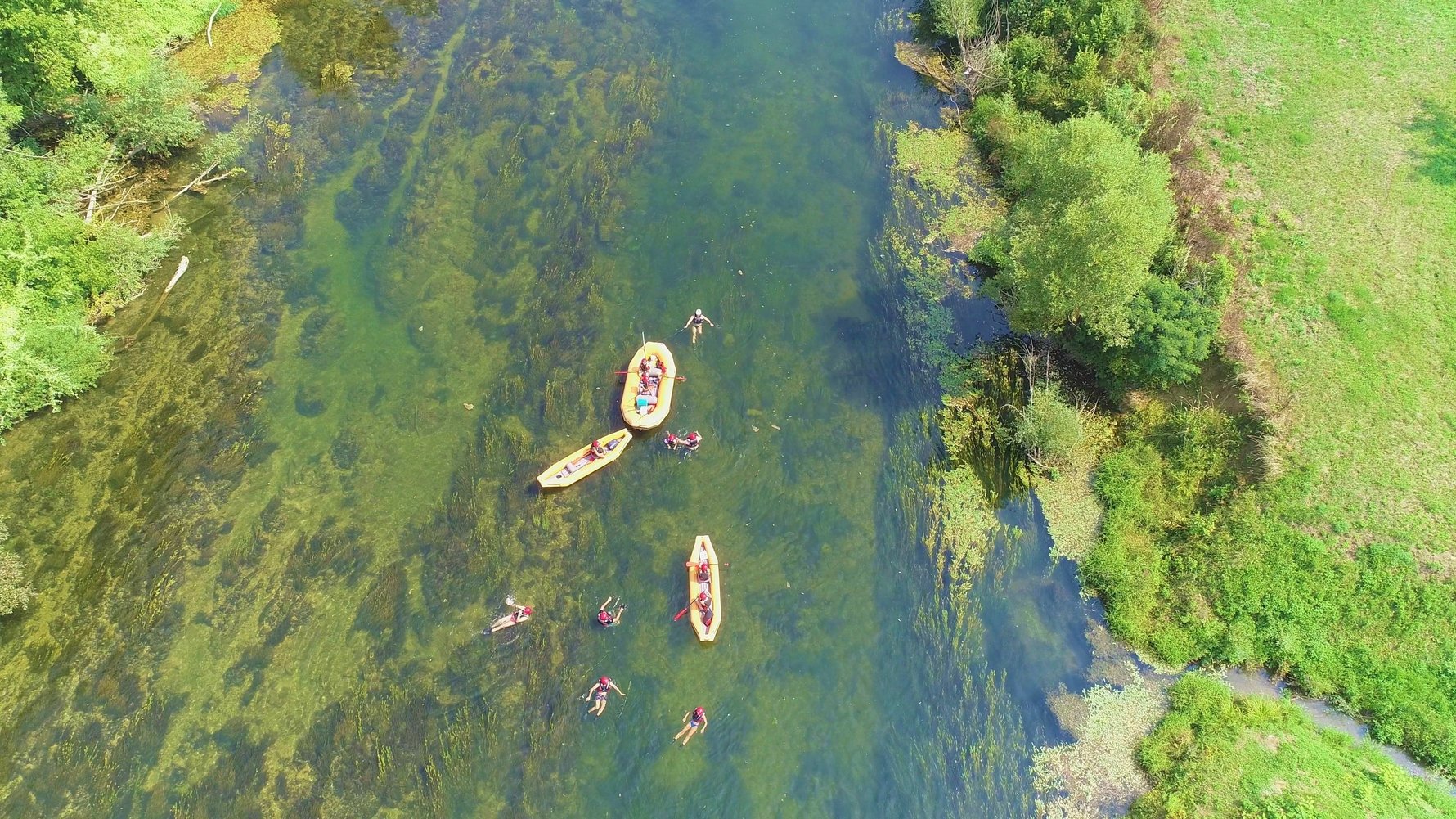
Croatia Opend Land Archives
8. Dubstep Country
The Dubovac Castle is one of the best-preserved and most beautiful monuments of medieval architecture in Croatia. Built on a prehistoric hill above the river Kupa, it was named after the dubs, the oaks growing on the surrounding slopes. The castle changed hands many times throughout history and its current appearance is the result of a comprehensive restoration carried out during the mid-twentieth century. Within the castle you will come across a museum and a nice cosy restaurant witha touch of Medieval times.9.Petrova Gora
Petrova gora is part of a protected landscape encompassing a range of hills carved into steep valleys criss-crossed with springs, streams and waterfalls and covered with thick forests of beech, hornbeam, holm oak, birch and sweet chestnut, with the occasional small meadow hidden within. The peak affords wonderful views over central Croatia as far as Slovenia, and over the nearby border into Bosnia and Hercegovina. However, it is only 90 minutes’ drive from Zagreb. This position, as well as the exceptionally dark night sky, has been the reason for the site’s growing popularity with astronomers who gather here to photograph astral phenomena at “star parties”. Each year in August, for example, an event is organised to watch the Perseids meteor shower.
10. Where the Wild Things Are
To learn more about the big beasts of Croatia’s forests then head for the Large Carnivores Visitors Centre in Stara Sušica (www.centar-velikezvijeri.eu),where a multi-media display introduces you to the lives of the bears and wolves of the Gorski Kotar.11. To the Waters and the Wild
A perfect place for spending a day in nature with family and friends. Golubinjak is located near the main road so it is easy to find and surprisingly peaceful despite the proximity of the highway. Beautiful large meadow at the entrance to the Park-forest, surrounded by tall trees that rise high above the white cliffs will simply take your breath away. In 1955 the 51 hectare of Golubinjak area was declared a protected park-forest. The park-forests in this area emerged on the karst relief. Because of this, they feature not only forest vegetation, but also a variety of karst phenomena. Golubinjak Park-Forest with its caves, rocks, sinkholes, stone bridges and other interesting formations, is a typical example. There is a walking trail through the forest which will take you to the Dove Cave and the Ice Cave whose refreshing temperatures definitely justify its name. At the beginning of the trail, you will come across the Queen of the Forest – the largest fir tree of Gorski kotar which is over 200 years old, with the height reaching 37 m which truly deserves the crown. At the entrance to the park there is a multipurpose grass-playground which is ideal for the outdoor games. You can also rent out a bbq area and have a fun day in the wild. Those who are not in the mood to do their own grilling may opt for specialties of the Gorski kotar cuisine served at the Park’s catering facility.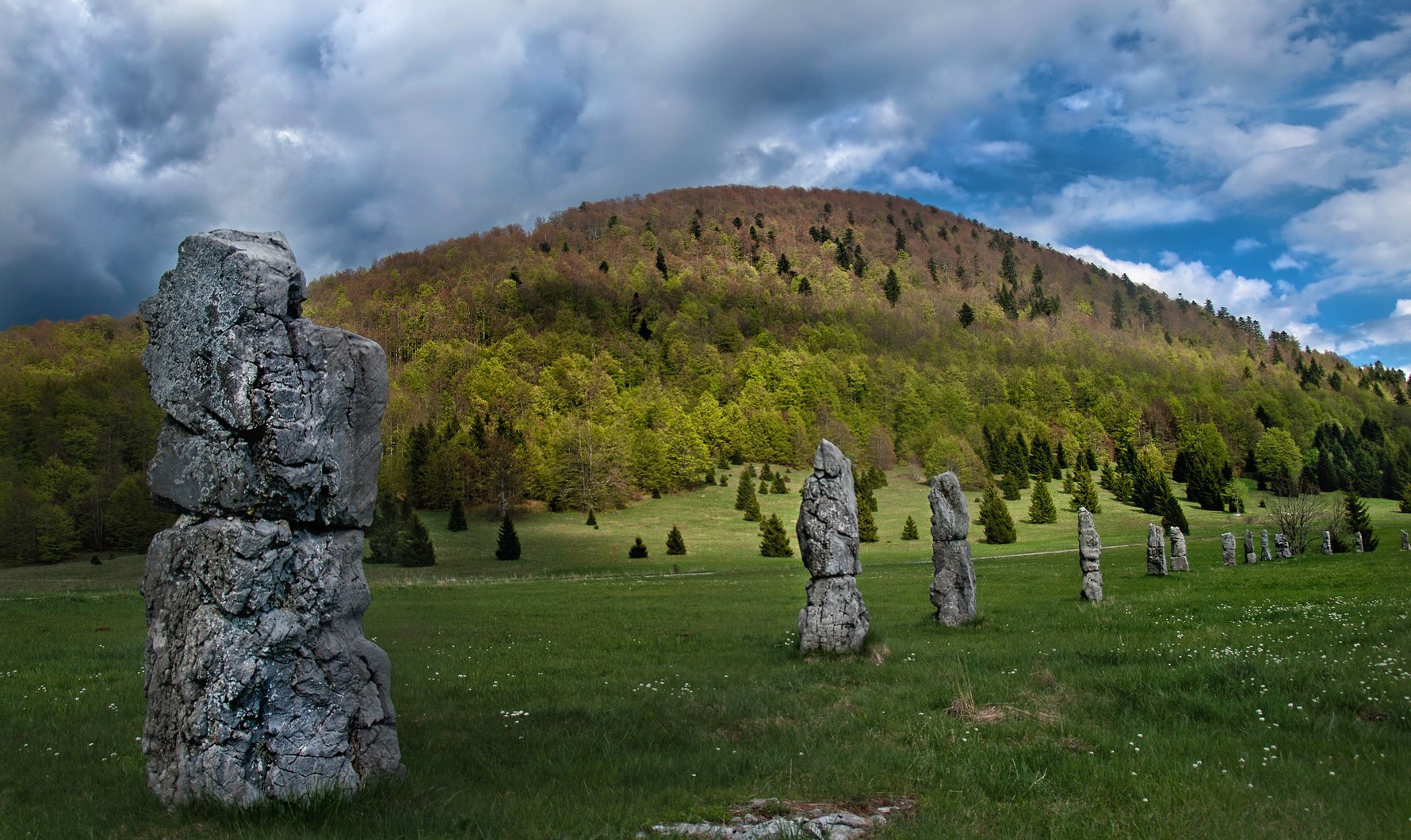
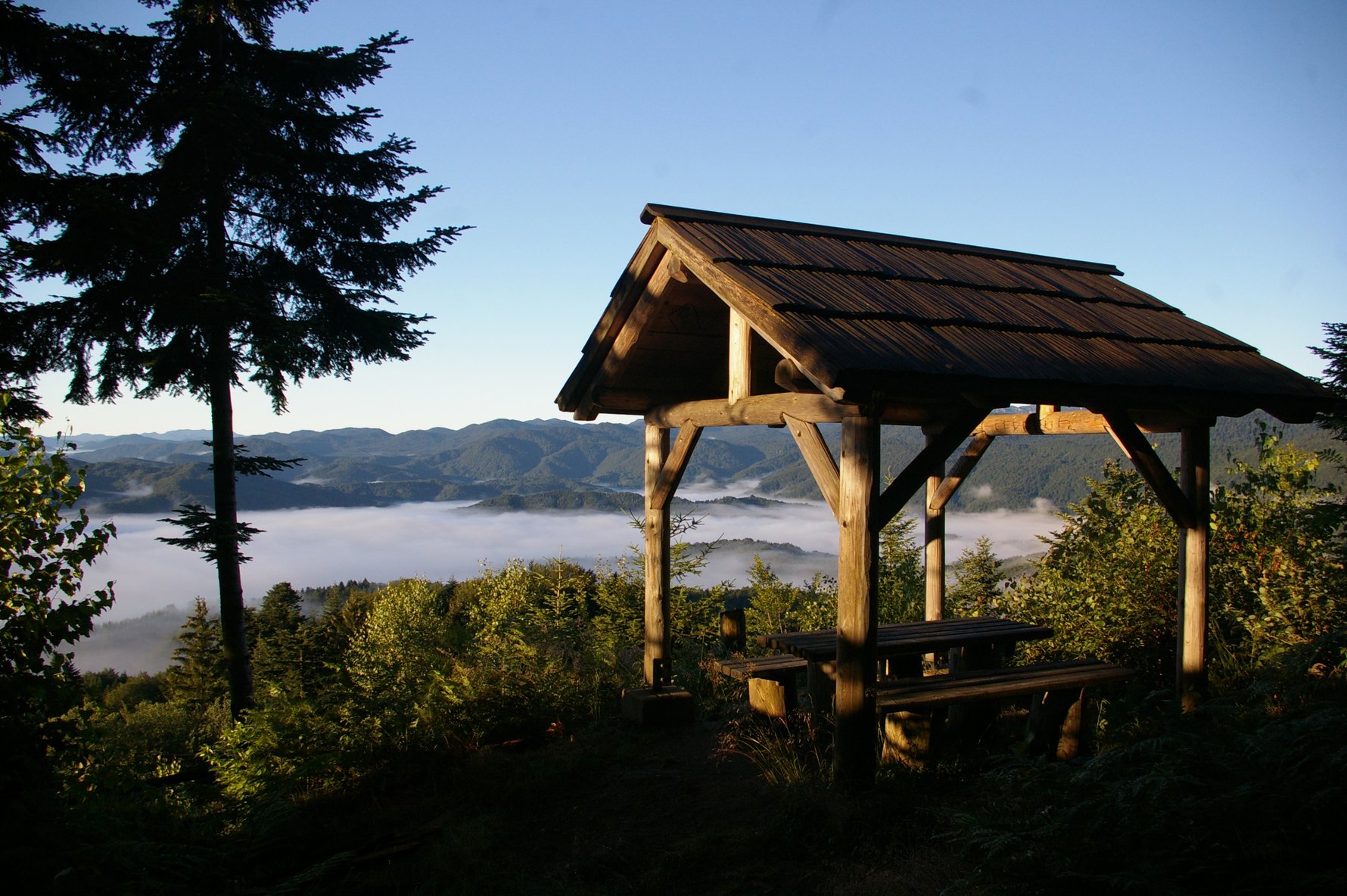
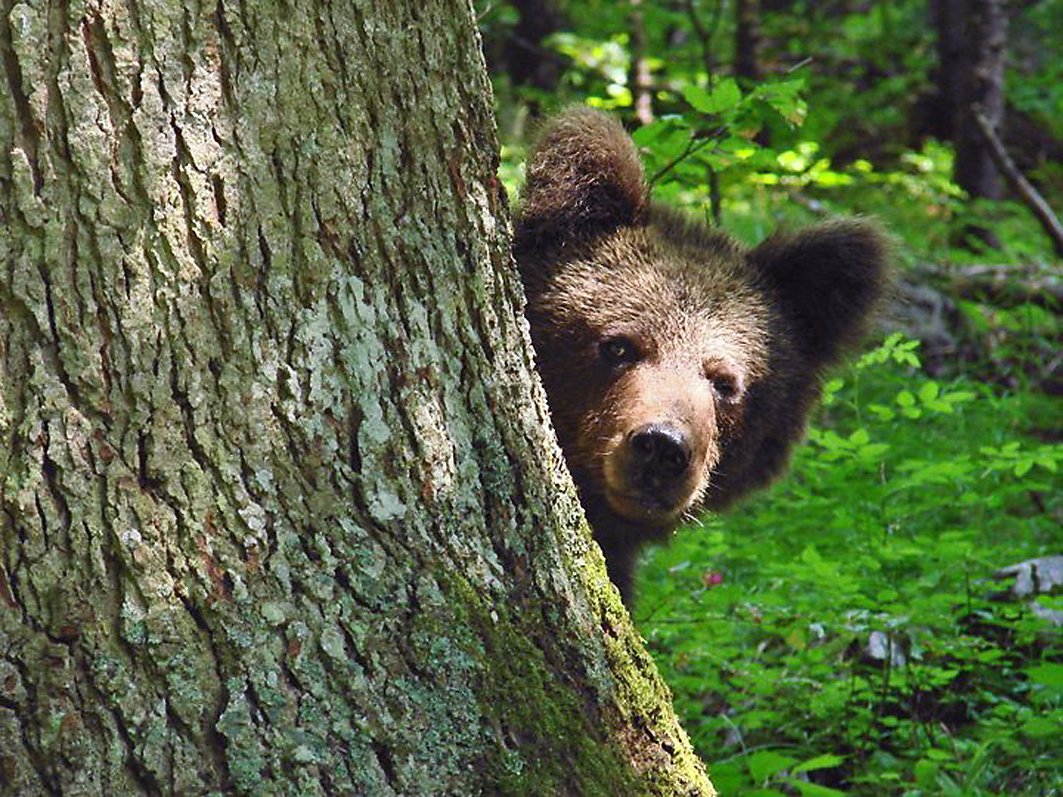
Kvarner Tourist Board Archives
12. The Good Spa Moment
Health and wellness go hand in hand with Opatija and the Thalassotherapia Medical Center has the complete package to suit almost all of your health needs. As their offer continues to expand, the center now includes the application of contemporary, aesthetic interventions ensured under the highest medical standards. It is possible to remove or alleviate almost all aesthetic flaws of the face and body and you get to stay in a lovely old Opatija villa.13. Pining for the Fjords
Cutting into the western coast of Istria is a wondrously beautiful inlet known as the Limski kanal or Lim Channel. Popularly dubbed the Lim Fjord due to its resemblance to the Norwegian coast, it is in fact a 10km-long estuary of a local river, the Pazinčica. Edged by steep grey-green slopes that in places reach a height of 150 metres, this stunning natural feature is a popular target for boat trips from the nearby resorts of Poreč and Rovinj. One historical personality who is rumored to have come here on a boat trip and stayed is seventeenth-century Welshswashbuckler Henry Morgan, whose alleged descendants live in the village of Mrgani above the fjord’s northern rim. The Italian adventurer and teller of tall tales Giacomo Casanova briefly stayed at the nearby hillside town of Vrsar, noting the region’s “good wine and beautiful women”in his memoirs. By way of tribute to the Venetian charmer, a popular biking trail from Vrsar to the Lim Fjord is known as the “Casanova Way”. The Fjord is also famous for its oysters, which are served in a couple of renowned restaurants down by the shore.Lim’s fjord-like features were put to good use in HoJlywood Viking movie The Long Ships (starring Richard Widmark and Sidney Poitier), filmed here in 1963.14. Lawrence of Dalmatia
Sinj is not the only place to have preserved an ancient contest for horse and rider. The Istrian village of Barban still celebrates its equine traditions with theannual Trka na prstenac or “Race for the Ring”, in which locals and their steeds attempt to spear a specially-designed ring on the end of a long lance. The age-old ritual is celebrated in this brand-new multimedia Visitors’ Centre (Barban Multimedia Centre), where video films and 3-D technology help you to “experience” the race yourself. Entrance to the display is through a dramatic tunnel of lighted hoops; elsewhere costumes, photographs and local artefacts help bring out a sense of place.Inside tips:
Hotel Peteani - Labin
Gourmet experiences of the Lim Fjord - freshly caught oysters, mussels in the Viking and Fjord restaurants on the bay.
Romuald’s Cave in the Lim Fjord is a carst phenomenon and a habitat of a large bat colony.
15.River Gacka
The River Gacka is in large part subterranean; in total it’s 61km long, while the overground part now covers only 11km. It passes through the town of Otočac. The Gacka’s waters are crystal clear, and it’s an amazing spot for anyone who fancies a bit of underwater caving or exploring sites of archaeological or natural interest. There are recreational and leisure facilities along the river, particularly country-style eateries. The river is renowned for great trout, and you can fish here between 1 March and 30 September. However, be aware that in the channel known as Karlov kanal near Otočac fishing is forbidden. The Plitvice lakes are nearby: an unmissable wonderland of lakes and waterfally: www.np-plitvicka-jezera.hr. Also, don’t miss the mills at Majerovo vrilo – it’s like stepping back in time, and you can see flour being milled in the old fashioned way. There’s a tourist information centre to answer all your questions about the river and the surrounding area.16. The Northern Velebit National Park
Huge, seemingly bare masses of rock full of crevices, impenetrable forests, glades large and small, grassy karst valleys, chasms, sinkholes, ice caves, ponds and limestone pavements... The Northern Velebit is a real mosaic made up of the most diverse habitats which are home to many plant, animal and fungus species, a natural wealth which has only just begun to be discovered. It is exactly this diversity of karstic forms, plant and animal life and natural landscapes which was the reason why the Northern Velebit was proclaimed a National Park. The Northern Velebit is an ideal place to visit for anyone who prefers an active holiday and spending time in pristine nature with the sense of a primordial wilderness. Biking, hiking, photography… the choice is yours. Among the best-known locations in the National Park are Zavižan, the Velebit Botanical Gardens, the Premužić Trail, Štirovača, Alan and Lubenovac. Normally it is said that people conquer mountains, but the Velebit is a mountain range that conquers the hearts of its visitors.17.Speleon - Centre of subterranean heritage
The Caves of Barać are among the most fascinating in Croatia, and the underground experience just got a little more awesome with the opening of the Centre of Subterranean Heritage. First of all, it just sounds cool, right? Like something out of a superhero movie, where the good guys plan and the bad guys plot. Just 20 minutes from Plitvice Lakes National Park (90 minutes or so from Zagreb), Speleon is a real adventure for all the family, with more than enough to keep visitors young and old engaged and enraptured. The Speleo Polygon is particularly interesting, a speleology-inspired children’s playroom perfect for inspiring young explorers.
18.Island of Corals
Zlarin is known as the Island of Corals, and that gorgeous heritage finally has a home to celebrate. The Croatian Coral Center (slated to open at the end of May or the beginning of June) is spread across two gorgeous stone houses, both offering something different to visitors. Kažerna houses a permanent exhibition of ecosystems and protected species, information on the tradition of coral farming in Zlarin, and a library containing the works of much-loved poet Vesna Parun. Šare is an educational research centre with a theatre and accommodation space for researchers and scientists. Coral farming has been integral to life in Zlarin, and the Croatian Coral Center showcases that in a marvellous manner.
19. Knin Interpretation Centre
Newly opened after a significant redevelopment and renovation, the Knin Interpretation Centre is a real triumph. Interactive displays tell the rich and storied history of the region, with added elements like a virtual reality balloon ride and a special corner for “Little Archeologists,” showing that no stone has been left unturned in the quest for entertaining education. There is also a wine shop and a zipline; you can make your own opinions about combining the two. Knin’s history deserves more attention, and this brilliant centre will go a long way in opening the eyes of all who visit.20.Veliki Kaštel Interpretation Centre
Developed under the umbrella of the Makarska Museum, the Veliki Kaštel Interpretation Center is custom-made to help visitors understand the fascinating culture and history of the fortress in the cliffs. The museum covers the archaeological, cultural and ethnological heritage, showcasing all three with enthusiasm and knowledge that is to be celebrated, presenting this fabulous place in a fresh, innovative light. The site’s natural heritage is the main event, particularly the life and work of Biokovo Botanical Garden Kotišina founder Fr. Jure Radić.21. Living la Via Brattia
Via Brattia, a 140 km-long hiking trail, encircles almost the entire island of Brač making it an exquisite tourist attraction.The trail connects the 12 most attractive historical locations and some of the most picturesque places on the island, challenging the recreationists and mountaineers who can collect stamps at each of the 12 points. The trail passes through the center of Supetar, Mirac, Sutivan, Bobovišća na moru, Ložišća, Milna, Murvica, Bol, Sumartin, Povlja, Pučišća, Postira, Škrip, and some of the island’s most beautiful beaches and bays (Zlatni rat, Farska, Murvica, Lovrečina, Smrka, etc.) Since the trail is circular, it is marked both ways and you can start your hike from any of the above-mentioned settlements, simply by following the blue-white blazes. If you decide to do the whole trail, it would be wise to plan a sleepover at some of the small towns on the map, where you can stock up on water and food supply. There is a map of the trail that will come in handy for all who decide to take up the challenge. Find the route map in the tourist information centers of the island of Brač.
22. The Quiet Side of Hvar
The island of Hvar has come to represent the glamour side of Croatian tourism, the place that attracts the swishest yachtsand the most beautiful party people. This is an image largely based on the island capital Hvar Town. In fact there is a lot more to the island, and people seeking a mixture of natural beauty and relaxing contentment will find that there’s a lot more to explore. The south side of the island in particular is a world apart; an isolated realm of steeply sloping vineyards and enchanting, under-commercialized beaches. The south coast is approached through a narrow road tunnel whose jagged rock-hewn appearance is enough to scare off many a recreational driver. Waiting on the other side are family-friendly pebble beaches at Ivan Dolac and Zavala, a lot of isolated coves, and plenty of apartment accommodation for people who want a share of paradise but without the crowds and the loud music. This part of the island also produces the richest grapes and the best Plavac wine, something to remember when visiting the modest scattering of quaint restaurants and bars.23. Mountains High
Situated on a karst plateau well to the east of the Adriatic coast, Imotski is a historic market town full of stone-built houses and tranquil alleys. It is famous for an astounding pair of natural beauty spots right on the outskirts of town, the Blue Lake (Modro Jezero) and Red Lake (Crveno Jezero). Both are situated in deep limestone depressions which fill with water during rainy periods and drain almost dry in especially hot summers. The Blue Lake is a designated nature park, with well-kept paths spiraling down to the shore and the possibility of taking a swim in the turquoise waters at the bottom. There is a lot of apartment accommodation in the area, and if the stark beauty of the Dalmatian interior appeals, this is the ideal place to enjoy it.Inside Tips:
Our suggestions for Gourmet experiences would be: Zoi (Split), Krug (Split) Lešić Dimitri, Konoba Mate (Korčula)
The peak of Sveti Ilija, above Rastovac village in the Biokovo mountains, offers an unforgettable 360 degree panorama in this magnificent coastal range.
24. Valleys Low
Travellers venturing down the coastal highway south of the Makarska Riviera tend to press on to Dubrovnik without stopping, which might indeed be the biggest mistake of their holiday. Dazzling motorists as they descend towards Ploče are the greeny-blue waters of the Baćina Lakes (Baćinska jezera), a group of seven little-explored watery expanses that sit on a karst plateau surrounded by attractively knobbly hills. Snuggled up behind meadows and rushes, these crystal-clear freshwater lakes make refreshing spots for a swim and a stroll. Linking the seven lakes is a network of foot- and bike-paths. Other activities include boat trips in traditional lađe (the shallow wooden boats specific to the Neretva region), or taking to the waters aboard kayak or paddle board.That such an attractive and compact lakeland area can exist so close to the coast comes as a big surprise to many; so big indeed that they don’t bother to stop, leaving the area for true lovers of Mediterranean tranquility.25. Bridge Over Troubled Waters
A spiny finger of land topped by a mountain ridge, the 65km-long Pelješac peninsula stretches northeastwards into the Adriatic from the famous oyster-farming town of Ston. The peninsula is not exactly unknown to tourists but it is far from being over-exploited, offering a plethora of niche locations and little-traveled corners. The main town is Orebić, a beach resort of some popularity on account of its expansive pebble strands. However Orebić remains a family-centred resort rather than a raucous hotspot, and the beaches are big enough to accommodate everyone without too much of a crush. Viganj, west of Orebić, is popular with the windsurfing crowd on account of its channeled breezes, but most of them stay in campsites, there is no line of hotels dominating the shore. Beach connoisseurs will love the fine crescents of shingle tucked away in hidden places like Trstenik, Žuljana and Divna. Above all Pelješac is famous for its wine, with the peninsula’s steep south-facing slopes yielding some of the best reds in the country.Inside Tip:
You can experience such a moment at the Antunović family smallholding in Kuna Pelješka where you can eat excellent spit-roast lamb and food baked under an iron lid.
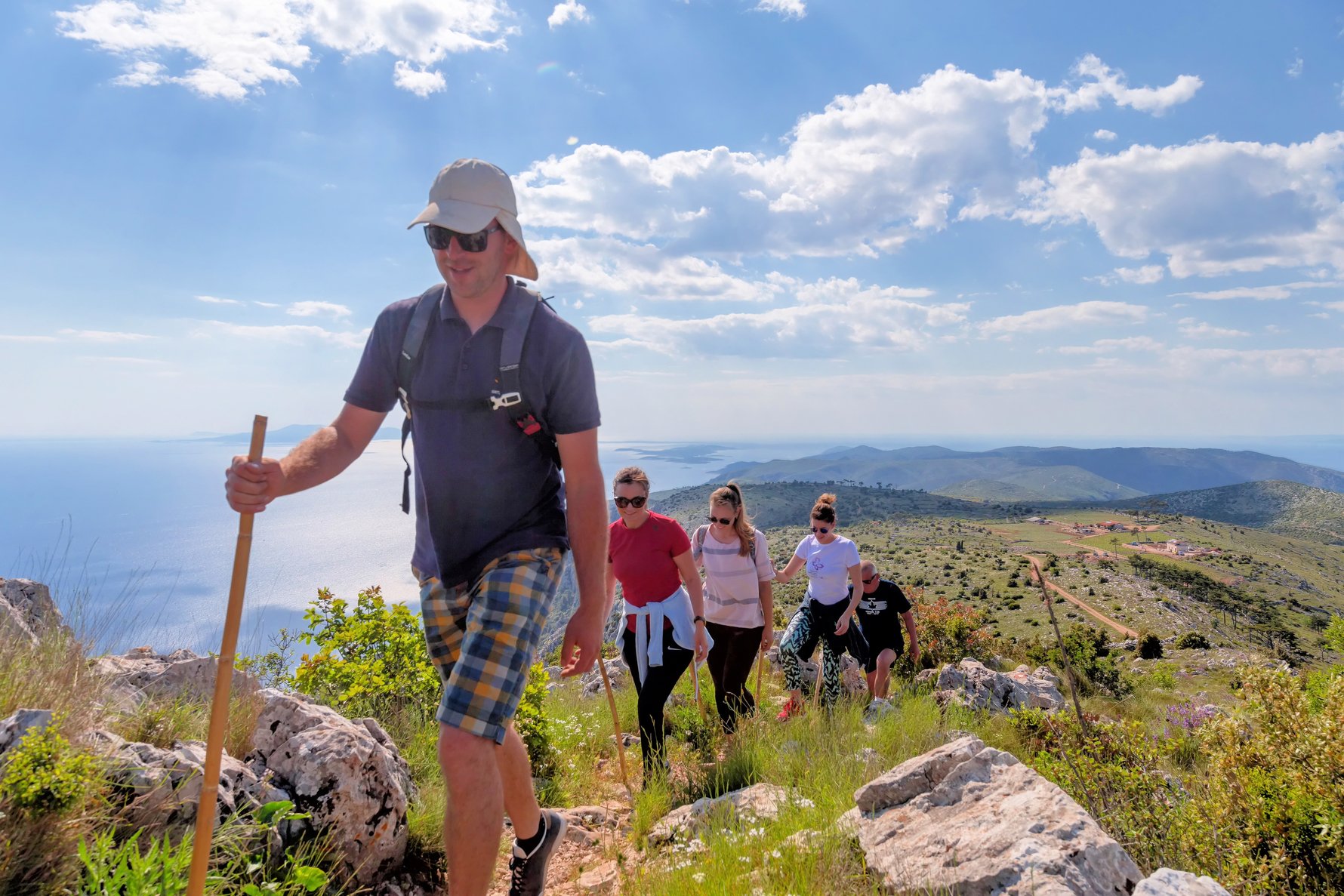

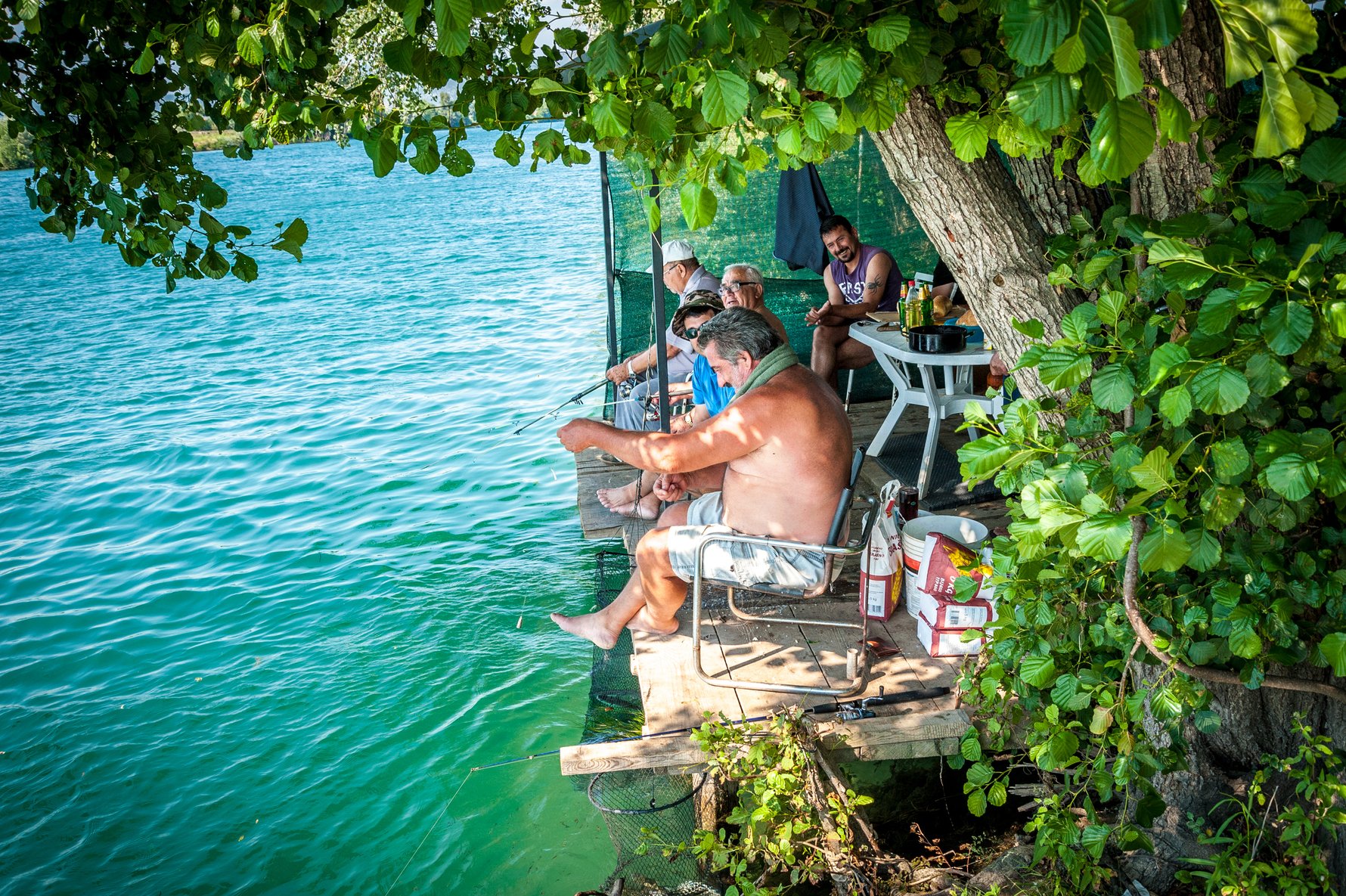





Comments